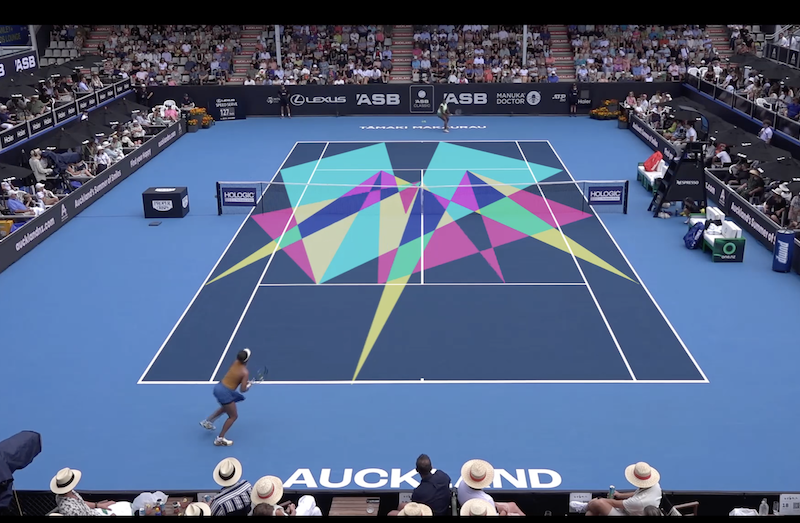New Zealand-made tracking technology is being used to help conservation efforts around the world. Ellen Rykers learns how the ‘drone ranger’ was initially invented to track penguins on a remote subantarctic island.
This is an excerpt from our weekly environmental newsletter Future Proof – sign up here.
When the chance to study hoiho yellow-eyed penguins on the remote subantarctic Auckland Islands cropped up, Chris Muller jumped at the chance. “I had a rush of blood to the head, I quit my job and within a month, I was heading south,” he says. For three-and-a-half months each summer from 2015-18, Muller lived in a hut on Enderby Island and counted penguins for his PhD. A comprehensive estimate of the subantarctic hoiho population hadn’t been undertaken since the late 1980s, and Muller’s job was to figure out how the penguins were faring.
Bushwhacking to find nests
A work-day would start at 4am, counting penguins commuting between their nests – hidden in thick scrub – and the sea. After a second breakfast late morning, Muller would venture out to search for penguin nests. “The traditional way to search for nests is just crawl around in the scrub until you find one,” he says. But it soon became apparent that he wouldn’t be able to find all the nests on the island in time – at 6 hours per nest, it was going to take two months just to locate them all, leaving no time for actual monitoring of how breeding was progressing.
In the evenings, Muller would catch hoiho for microchipping – so he could tell who was who – and would cop a few gnarly bruises in the process. “Hoiho have really dense bones and big stocky arms, and they karate chop. They can hit you half a dozen times within a second or two.” He also had permission to attach dive loggers with little VHF radio transmitters to 10 birds. The idea was to track the hoiho foraging at sea, but Muller figured he could use the transmitter to track them on land too. Using a handheld antenna, he could locate tagged birds on nests in about an hour – much quicker, but still not quick enough.
The ‘drone ranger’
Returning to the mainland, Muller set about developing a new type of VHF receiver in collaboration with Massey University and the University of Canterbury. “A standard receiver is like a radio in a car: it can listen to only one channel at a time. Each animal has a different frequency – like a different radio station – so normally when you’re trying to find them you’ve got to track each one separately,” he explains. The new receiver was able to track 500 different frequencies (and therefore, animals) without having to change channels. This multi-frequency receiver, combined with a GPS and attached to a drone, could map the locations of all the nests in the study area in a 10-15-minute flight.
Returning to the subantarctic for two more summers, Muller’s tracking drone – which didn’t disturb the birds – allowed him to collect all the hoiho data he needed in record time. He found that the subantarctic hoiho have likely declined since 1989, but appear to have remained relatively stable over the 2010s – noting it’s tricky to compare numbers exactly. Breeding success varied each season – one year, a whole lot of eggs didn’t hatch, perhaps due to a weather event. And the subantarctic birds were foraging differently to their mainland counterparts – spending more time hunting for a fishy snack in the water column, rather than diving all the way to the seafloor.
Kiwi-made tech takes on the world
Since wrapping up his PhD, Muller has won awards for his innovative “drone ranger” tech. With assistance from Callaghan Innovation, he founded the start-up Altitude Conservation to further develop the wildlife tracking technology, which was a finalist in this year’s NZ Hi-Tech Awards. “The equipment has since been expanded for use on other platforms including piloted aircraft and vehicles, and we’re working with researchers around the world to conserve endangered species,” he says. It’s been used to track stoats and North Island robins in New Zealand, sea turtle hatchlings in Australia, and bats in Colombia. “By the end of the year, we’re hoping to add some more projects in Australia and maybe Africa and North America as well.”
Meanwhile, the hoiho on Enderby Island haven’t been intensively monitored since Muller finished PhD fieldwork in 2018. “Who knows what’s happening when nobody’s watching? Even though they seem to be OK at the moment… they’re not low risk by any means.”




















Discussion about this post